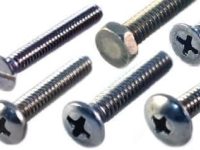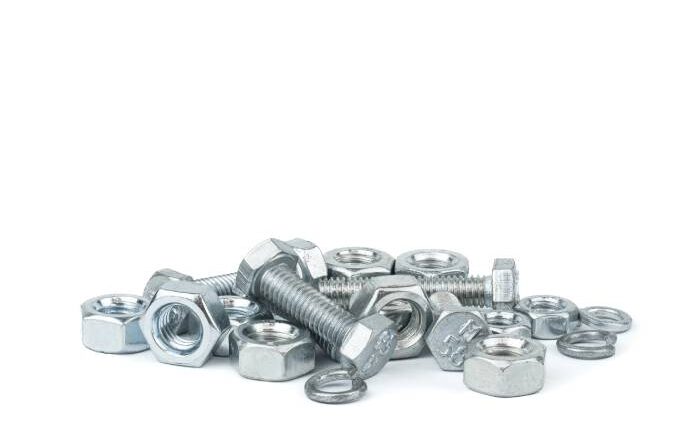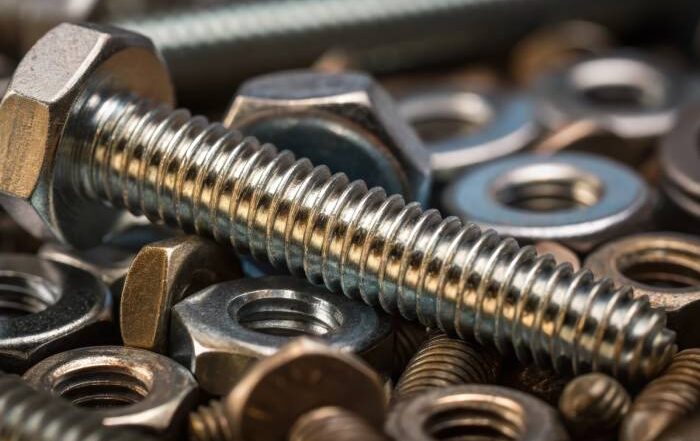
What Is a Self-Tapping Screw?
A self-tapping screw forms its own hole and taps its own thread as it is driven into various, different materials. Self-tapping screws are available in just about every type of screw head design available in the market. The most common being the Phillips or slotted head. The tips and threads of self-tapping screws come in a vast array of patterns, depending on the application required.
Self-tapping screws are ideal for applications where an item needs regular maintenance and needs constant disassembly and reassembly.
How to Use Self-Tapping Screws
First, decide on the correct type of screw for the desired substrate to be fastened. Mark the precise position where the screw will be used and ensure you have ample room to use a screwdriver or drill machine.
Usually, it helps, but is not always necessary, to drill a pilot hole slightly smaller in diameter than the actual screw size. This allows for the screw body to fill the drilled cavity and the threads to cut into the material as it is screwed in. Be careful to use a drill bit slightly smaller than the self-tapping screw, otherwise, the threads won’t have anything to bite into as it turns in.
Position the screw straight in line with the hole and turn it in, one or two turns, by hand. This allows the screw to be left in the hole as you pick up your screwdriver or drill machine. Using firm short movements, screw the self-tapping screw in place using a Phillips or flat head screwdriver or drill bit. Ensure that the self-tapping screw goes in straight, and do not over-tighten it as this could cause the head to strip.
Thread-Forming Versus Thread-Cutting Self-Tapping Screws
Two distinct classes of self-tapping screws can be identified by the action which takes place as it is turned in. Thread-forming screws form their own threads as they are screwed into the material. Thread-cutting screws do the same, but there is a fundamental difference in the ways in which they do so. Thread-cutting screws have cutting edges that actually cut into the material, removing it from the area into which the screws are driven. Thread-forming screws do not cut away any material, but rather displace it so that the material flows around the threads.
Thread Forming Self-Tapping Screws
These self-tapping screws displace the material (usually wood, soft plastics or thinner sheet metals) without removing it. They are used when larger stresses are needed. This method allows for better loosening because no material is removed, creating a zero clearance fit. Generally, these screws can stand up to loosening without the need for lock washers or other devices designed to prevent loosening. Thread tapping screws are limited to use on those materials that are malleable enough to accommodate them, such as aluminum, soft steel and non-ferrous metals. Formed threads are generally regarded as stronger than cut threads because the grain of the material is compressed, rather than cut away.
Thread Cutting Self-Tapping Screws
Thread cutting screws have cutting edges, in the form of one or more flutes, machined into its threads. This allows the material, being screwed into, to be removed as the screw is turned in. Thread cutting screws are more versatile and can be used on more materials than their thread-forming counterparts. Thread-cutting screws create a perfect thread fit with a large amount of holding power and vibration resistance. Installing these screws also takes less time, and makes assembly and disassembly very easy. They are most often used with wood and metals and don’t generate the same stress as thread-forming screws.
Save yourself time and labor by using the correct self-tapping screw for the job required. Sharp-tipped self-drilling screws are used when soft materials are being fastened as they don’t require a pilot hole to be drilled. Self-drilling, self-tapping screws are ideal for thicker metals as they can drill and fasten in one step.
Need stainless steel fasteners? Then contact Marsh Fasteners today!



